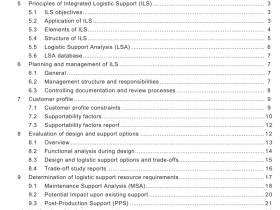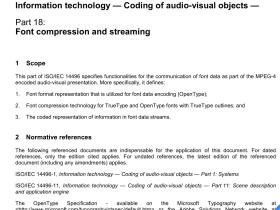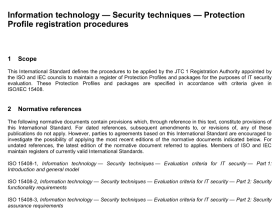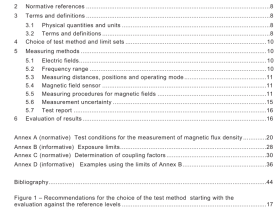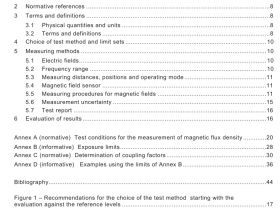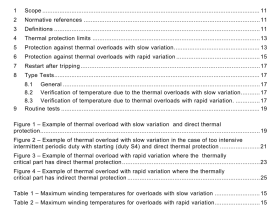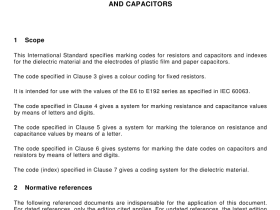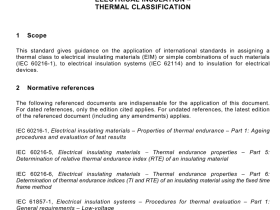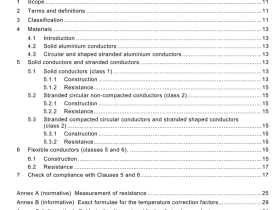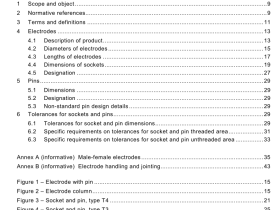BS ISO IEC 20926 pdf download
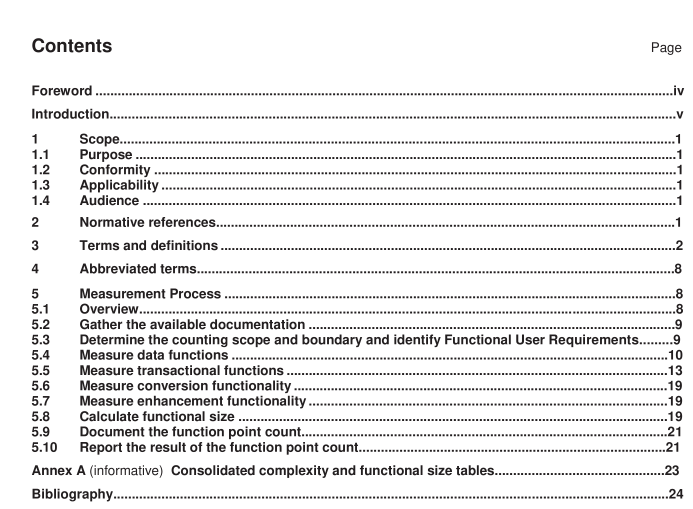
BS ISO IEC 20926 pdf download Software and systems engineering — Software measurement — IFPUG functional size measurement method 2009
1 Scope
1.1 Purpose
This International Standard specifies the set of definitions, rules and steps for applying the IFPUG functional size measurement (FSM) method.
1.2 Conformity
This International Standard is conformant with all mandatory provisions of ISO/IEC 1 41 43-1 :2007.
1.3 Applicability
This International Standard can be applied to all functional domains.
NOTE IFPUG continues to publish white papers providing guidelines for use in evolving environments and domains.
This International Standard is fully convertible to prior editions of IFPUG sizing methods.
IFPUG function point analysts have identified different delivery rates (hours to deliver a function point) related to building applications in different functional domains calibrated for varying project sizes and software complexities.
1.4 Audience
This International Standard can be applied by anyone requiring a measurement of functional size. Persons experienced with the method will find this International Standard to be a useful reference.
2 Normative references
The following referenced documents are indispensable for the application of this document. For dated references, only the edition cited applies. For undated references, the latest edition of the referenced document (including any amendments) applies.
ISO/IEC 1 41 43-1 :2007, Information technology — Software measurement — Functional size measurement — Part 1: Definition of concepts
3 Terms and definitions
For the purposes of this document, the following terms and definitions apply.
3.1
adaptive maintenance
modification of a software product, performed after delivery, to keep a software product usable in a changed or changing environment
NOTE Adaptive maintenance provides enhancements necessary to accommodate changes in the environment in which a software product must operate. These changes are those that must be made to keep pace with the changing environment. For example, the operating system might be upgraded and some changes may be made to accommodate the new operating system.
[ISO/IEC 1 4764:2006, 3.1 ]
3.2
application
cohesive collection of automated procedures and data supporting a business objective, consisting of one or more components, modules, or subsystems
EXAMPLES Accounts payable, accounts receivable, payroll, procurement, shop production, assembly line control, air search radar, target tracking, weapons firing, flight line scheduling and passenger reservations.
3.3
application functional size
measure of the functionality that an application provides to the user, determined by the application function point count
3.4
application function point count
activity of applying this International Standard to measure the functional size of an application
3.5
arranging
activity of sequencing attributes in a transactional function
3.6
associative entity type
entity type that contains attributes which further describe a many-to-many relationship between two other entity types
3.7
attributive entity type
entity type that further describes one or more attributes of another entity type
